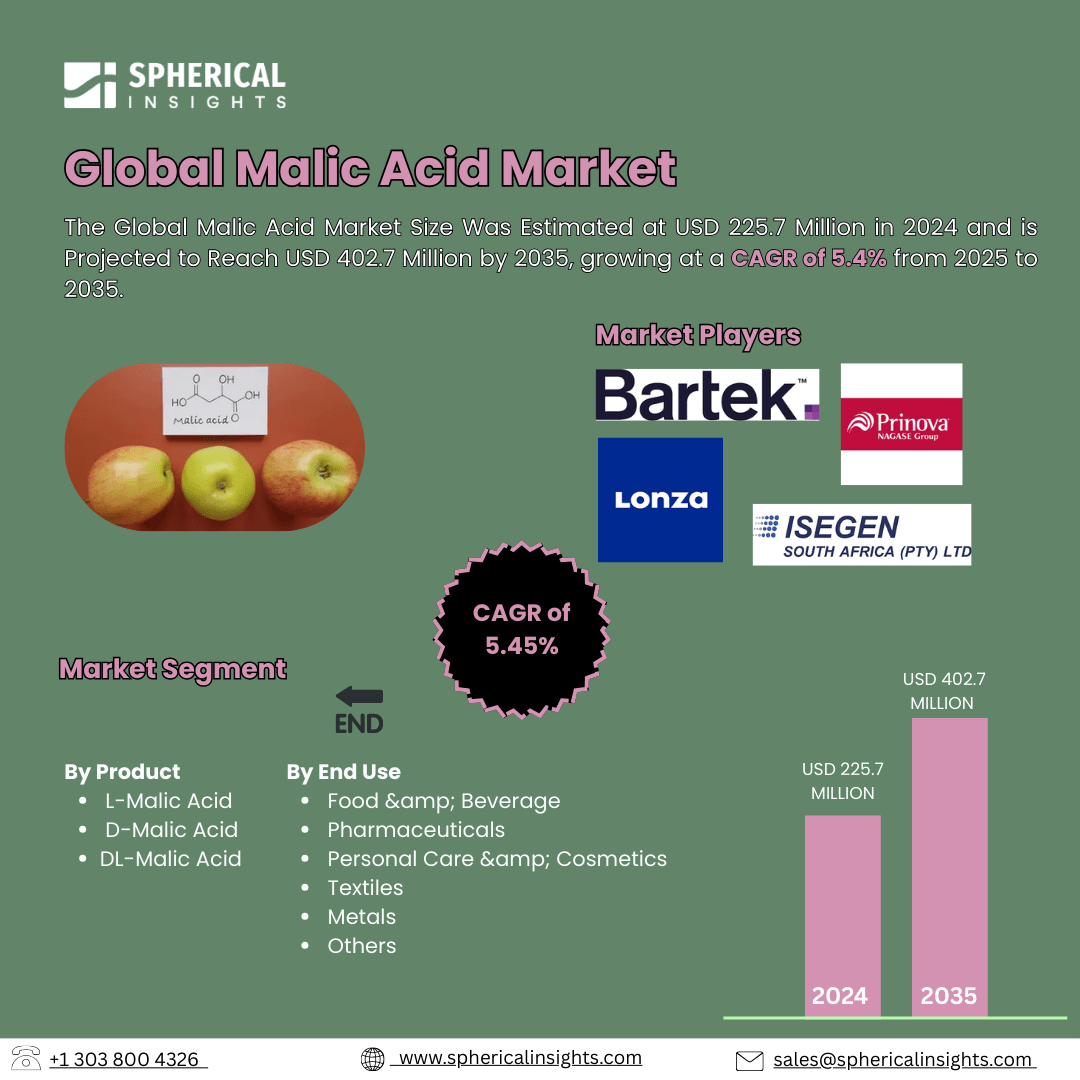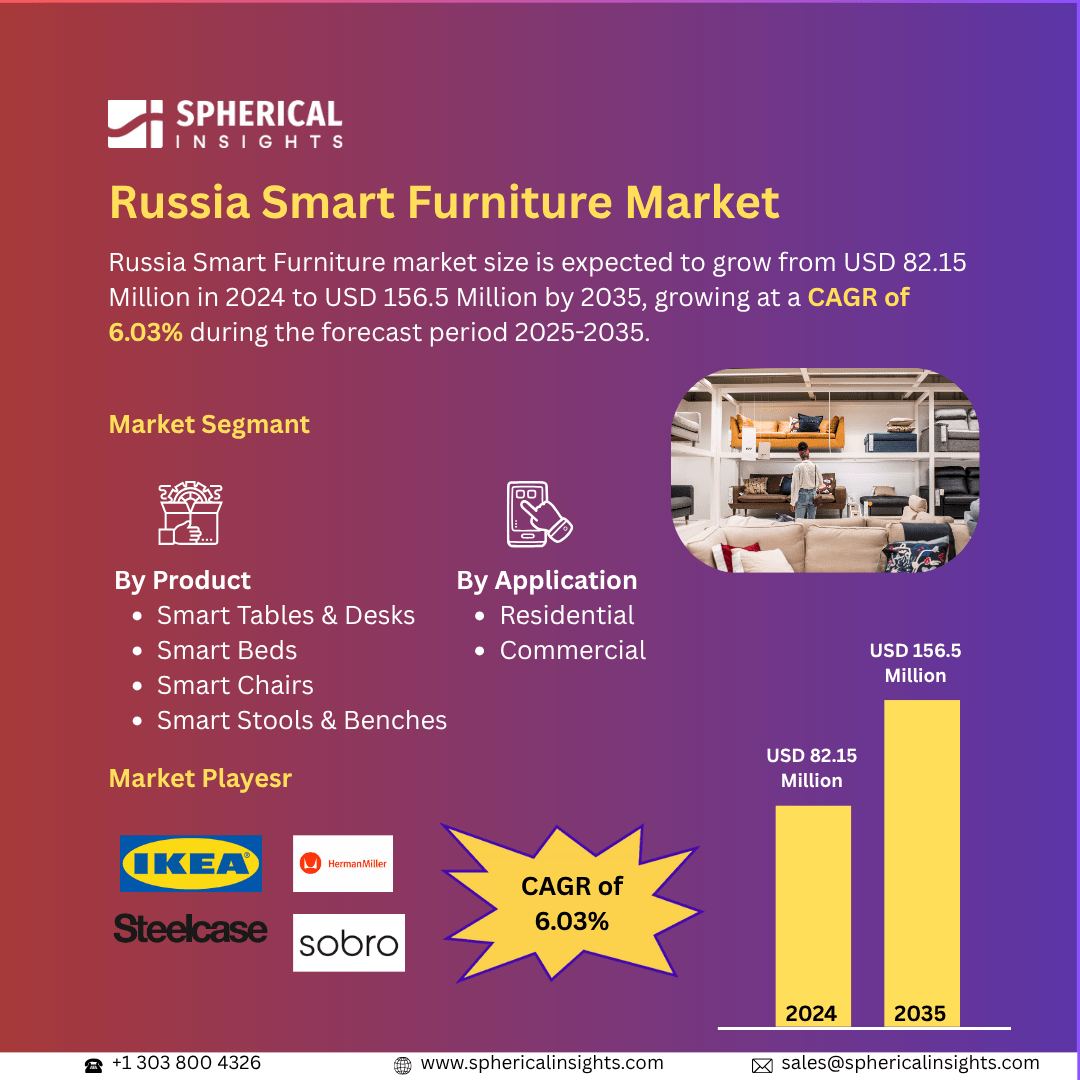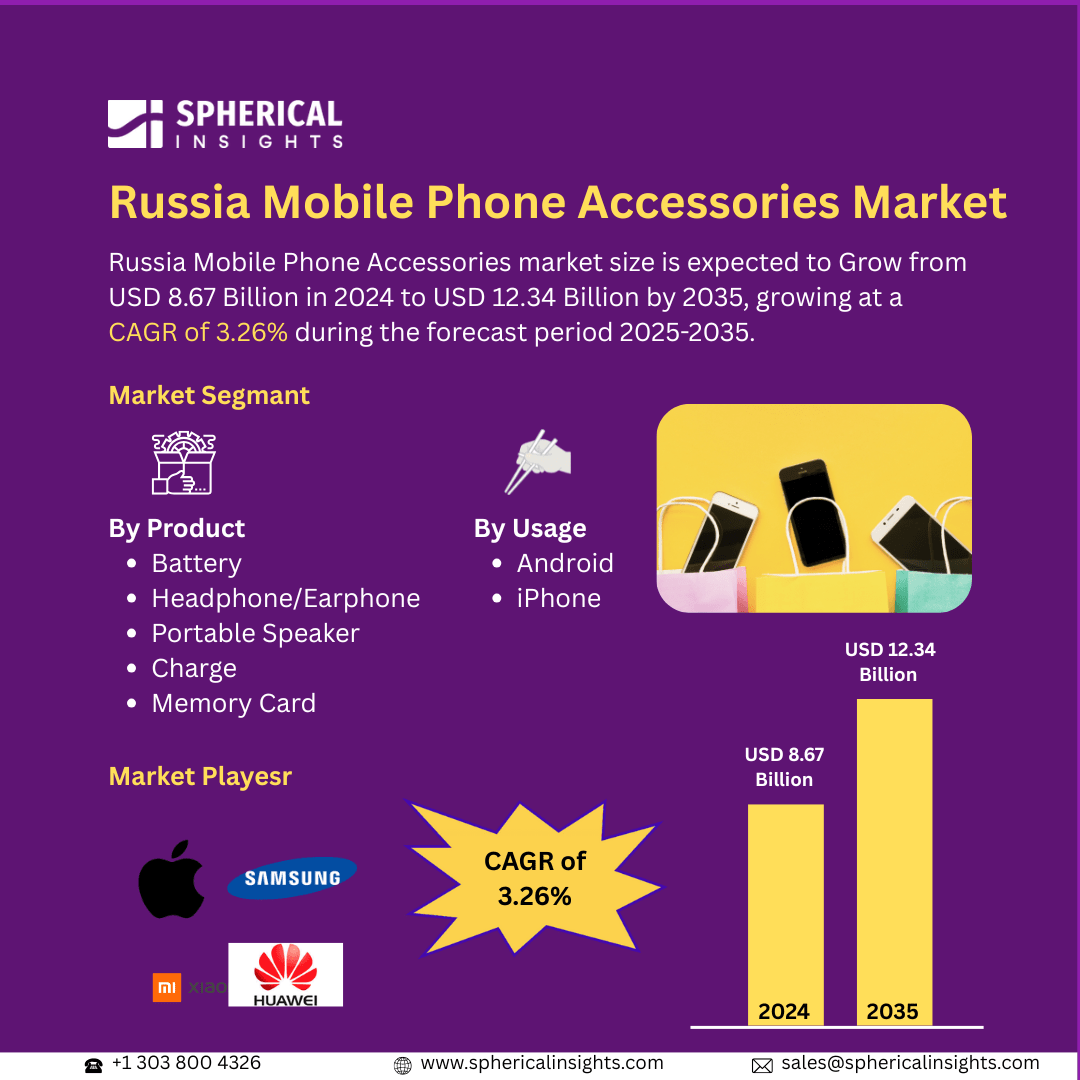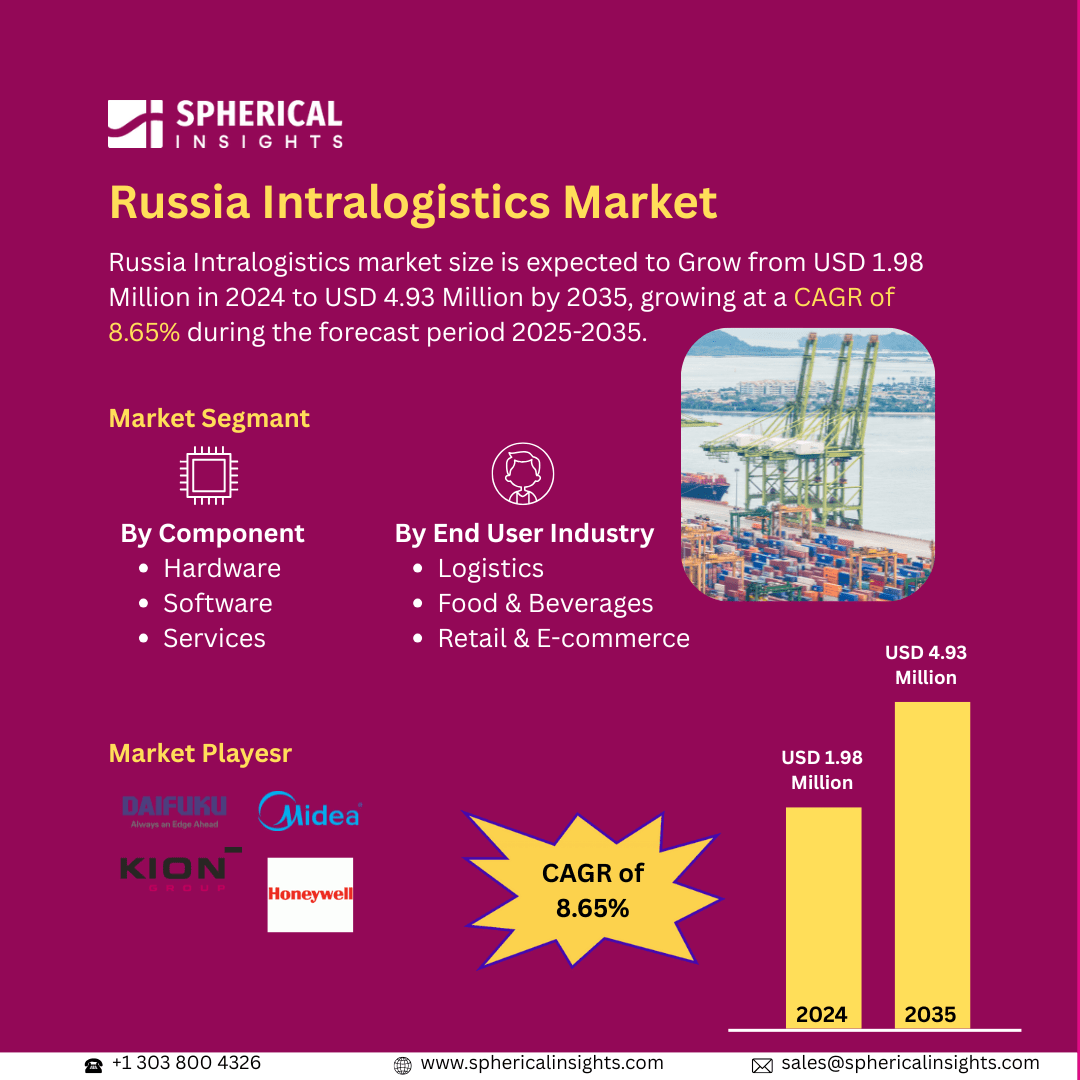Malic Acid Market Summary
The Global Malic Acid Market Size Was Estimated at USD 225.7 Million in 2024 and is Projected to Reach USD 402.7 Million by 2035, growing at a CAGR of 5.4% from 2025 to 2035. The market for malic acid is expanding as a result of a number of factors, such as growing demand in the food and beverage sector, growing usage in personal care products, and growing pharmaceutical applications.
Key Regional and Segment-Wise Insights
- In 2024, the Asia Pacific malic acid market accounted for 42.7% of the global industry, and dominated the market globally.
- In terms of product, the L-malic acid segment led the malic acid market in 2024 with a 52.4% revenue share.
- In 2024, the food and beverage sector led the malic acid market by end-use.
Global Market Forecast and Revenue Outlook
- 2024 Market Size: USD 225.7 Million
- 2035 Projected Market Size: USD 402.7 Million
- CAGR (2025-2035): 5.4%
- Asia Pacific: Largest market in 2024
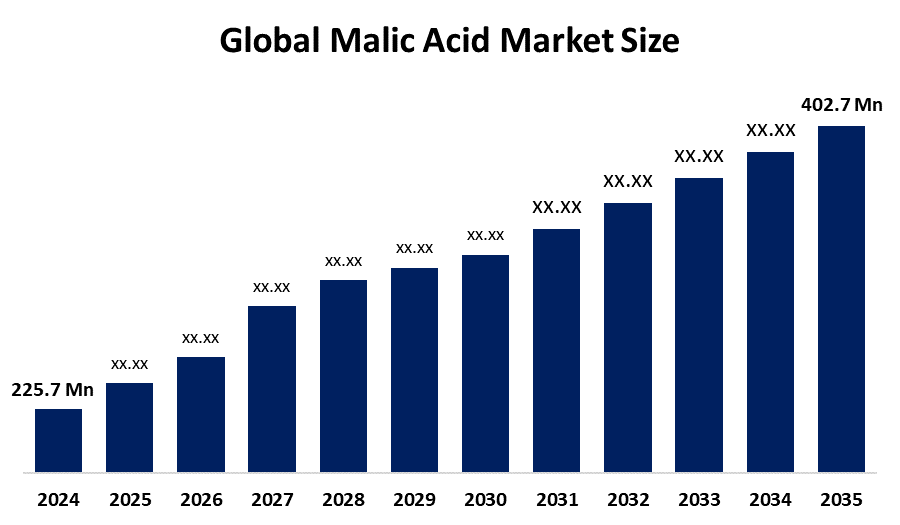
The global industry behind the production, distribution, and use of malic acid, which occurs naturally in apples and other fruits, is referred to as the malic acid market. The market for malic acid experiences strong growth because of its increasing popularity as a natural ingredient for food and beverage products. The organic compound malic acid found in fruits stands as an attractive replacement for synthetic acidulants when producers seek natural additives to meet consumer demand for health-conscious products. The food industry uses this compound extensively in beverages, confections, and baked goods because it helps stabilize products and maintain proper pH levels while enhancing taste quality. The rising popularity of fruit-based products and carbonated beverages, along with functional drinks, has significantly increased market demand. Regulatory agencies, including the FDA and EFSA, provide safety approvals that support worldwide market adoption of this product.
The pharmaceutical industry, alongside animal feed and cosmetic industries, uses malic acid increasingly in addition to its traditional food and beverage applications. Pharmaceutical drug formulations require excipient applications of malic acid, while the healthcare industry expansion drives up the demand for these pharmaceutical excipients. The growing worldwide need for animal protein is addressed through feed palatability and digestion improvements, which malic acid delivers as an ingredient in animal feed products. Cosmetic companies are increasingly incorporating malic acid into their skincare products because of its moisturizing and exfoliating properties. The manufacturing economics benefit from cheap raw materials and government incentives in Asia Pacific, especially China, which supports global supply. The market for malic acid continues to expand because of these factors, together with increasing urbanization, higher disposable incomes, and changing dietary patterns across emerging nations.
Product Insights
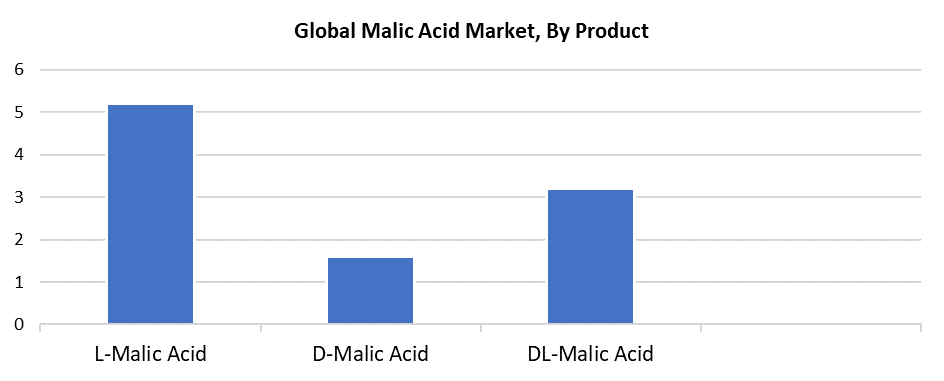
In 2024 L-malic acid segment dominated the market with 52.4% revenue share globally because it is widely used in food and beverage products and pharmaceuticals. The naturally occurring isomer in multiple fruits makes L-malic acid an ideal flavor enhancer for fruit-based items, sweets, and beverages because it delivers a natural, fruity sour taste. The substance serves as an essential component for fermentation because it promotes yeast growth while reducing the fermentation time in both baked products and alcoholic drinks. L-malic acid receives growing pharmaceutical interest because of its cardiovascular health advantages and supplement characteristics. The commercial appeal of this substance and its industrial production potential increase because it dissolves easily in solvents while being adaptable for fermentation and enzymatic production methods.
The DL-malic acid segment will experience the fastest CAGR throughout the forecast period because of its extensive applications and economical pricing. The racemic mixture DL-malic acid consists of D-and L-isomers, which function as an efficient flavor enhancer and acidulant that delivers desirable tartness to food and beverage products, including fruit-flavored items, carbonated drinks, and candies. The production expenses of DL-malic acid remain lower than L-malic acid, which makes it a competitive choice for manufacturers, especially those operating in cost-sensitive markets. The pharmaceutical industry uses DL-malic acid as an agent to enhance drug solubility and bioavailability, which leads to better formulation efficiency. The demand for this product grows across various industries because it functions as a pH regulator while maintaining increasing popularity in cosmetic and personal care product applications.
End Use Insights
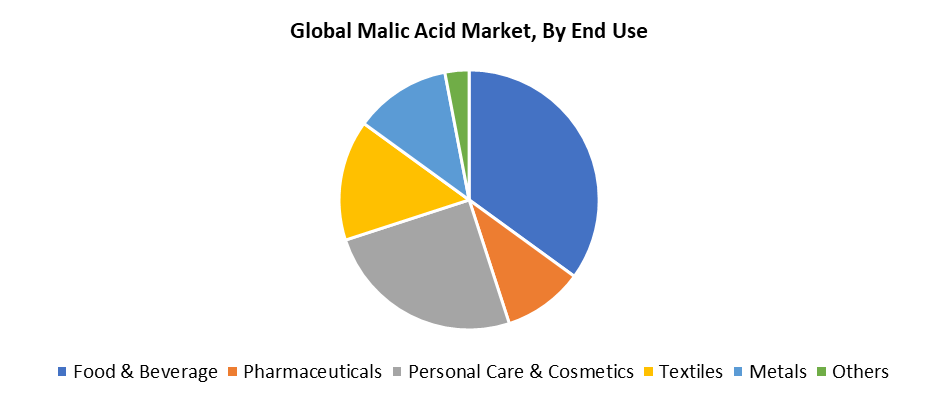
The food and beverage segment dominated the market for malic acid throughout 2024 because people desire natural food additives and acidity controls for their processed foods and drinks. The widespread use of malic acid in fruit juices, carbonated drinks, baked goods, and confections stems from its multiple functions as a preservative, flavor enhancer, and pH stabilizer. The natural taste of malic acid matches perfectly with the health-conscious consumer demand for clean-label products because it mimics natural fruit flavors. Developing nations such as China and India experience segment expansion because of rising disposable incomes, together with rapid urbanization and growing retail and e-commerce platforms. Health-conscious consumers drive the worldwide food and beverage market towards natural malic acid through their preference for new product developments that use this ingredient.
The personal care and cosmetics segment is anticipated to experience the fastest growth throughout the forecasted period, because customers increasingly choose natural multipurpose components for their skincare and haircare products. The fruit-derived malic acid functions effectively as a gentle exfoliating agent for anti-aging creams, facial peels, and serums because it helps stimulate cell renewal and removes dead skin cells. The product stability and skin compatibility of formulations improve when malic acid functions as a pH adjuster and skin-conditioning agent. The combination of natural origins and proven results makes malic acid a popular ingredient for clean-label products and environmentally friendly beauty goods. The market continues to grow because of the increasing need for safe and efficient personal care products, especially in developing countries.
Regional Insights
The worldwide malic acid market held a significant portion from North America in 2024 because consumers sought natural functional components with clean labels. The region's rising use of malic acid as a natural acidulant and taste enhancer stems from increasing consumer interest in low-calorie and sugar-reduced products, including fruit juices, carbonated drinks, and health-conscious snacks. The rising popularity of sports nutrition products and functional beverages helps sustain ongoing acceptance. The thriving personal care and cosmetics industry drives the strong demand for malic acid as a skin-conditioning ingredient and pH-adjustment agent. The market for malic acid in North America shows rapid growth and innovative trends because of bio-based production technological advancements combined with active research and development initiatives.
Europe Malic Acid Market Trends
Europe achieved a significant market share in the worldwide malic acid market during 2024 because consumers increasingly prefer natural and clean-label products with low sugar content. The rising preference for better living has led to malic acid becoming a widely adopted natural flavor enhancer and acidity regulator in functional foods and beverages, confections, and bakery products. The strict regulatory environment, together with informed consumers in the region, drives the shift from synthetic additives to naturally occurring substances such as malic acid. The expanding applications of malic acid in cosmetics, pH adjustment, pharmaceuticals, dental care, and effervescent products result in increased market demand. The area's market leadership position strengthens because of rising interest in plant-based, sustainable components.
Asia Pacific Malic Acid Market Trends
Asia Pacific dominated the malic acid market globally, with a 42.7% market share in 2024 because of rising demand for processed meals and carbonated drinks alongside functional goods. Nations such as China and India experience population growth and urbanization, which leads to increased demand for packaged foods and beverages that require malic acid for preservation and flavor enhancement. High-quality food and drinks, together with cosmetics, are experiencing rising demand because the region's middle class expands and consumers gain more disposable income while their eating patterns evolve. The combination of strong industrial infrastructure in Asia Pacific with affordable production costs and simple access to raw materials gives companies a competitive advantage. The adoption of malic acid throughout different end-use sectors receives additional support from rising health awareness, natural ingredient education, and clean-label consumer interest.
Key Malic Acid Companies:
The following are the leading companies in the malic acid market. These companies collectively hold the largest market share and dictate industry trends.
- Bartek Ingredients Inc.
- Lonza
- Prinova Group LLC
- ISEGEN South Africa (Pty) Ltd
- Polynt S.p.A.
- Yongsan Chemicals
- Anhui Sealong Biotechnology Co., Ltd.
- Nacalai Tesque, Inc.
- Thirumalai Chemicals
- FUSO CHEMICAL CO., LTD
- Guangzhou ZIO Chemical Co., Ltd.
- Others
Recent Developments
- In September 2023, Dialog Group Bhd revealed plans to spend about USD 80 million on building a specialty chemical manufacturing facility in Pahang, Malaysia. The facility will focus on producing malic acid as its main product, which will reach 12,000 metric tons of yearly production capacity.
- In July 2023, pH Plex introduced shampoo and conditioner with a malic acid base that is intended to protect and restore hair. The recipe is designed to work with all hair types and is free of parabens and sulfates.
Market Segment
This study forecasts revenue at global, regional, and country levels from 2020 to 2035. Spherical Insights has segmented the malic acid market based on the below-mentioned segments:
Global Malic Acid Market, By Product
- L-Malic Acid
- D-Malic Acid
- DL-Malic Acid
Global Malic Acid Market, By End Use
- Food & Beverage
- Pharmaceuticals
- Personal Care & Cosmetics
- Textiles
- Metals
- Others
Global Malic Acid Market, By Regional Analysis
- North America
- Europe
- Germany
- UK
- France
- Italy
- Spain
- Russia
- Rest of Europe
- Asia Pacific
- China
- Japan
- India
- South Korea
- Australia
- Rest of Asia Pacific
- South America
- Brazil
- Argentina
- Rest of South America
- Middle East & Africa
- UAE
- Saudi Arabia
- Qatar
- South Africa
- Rest of the Middle East & Africa
